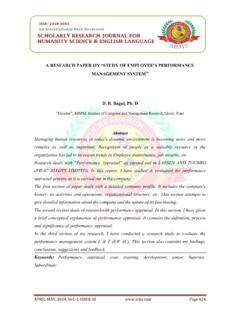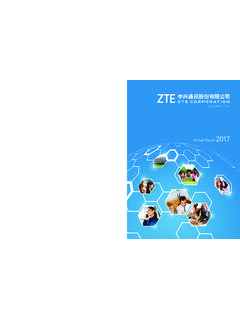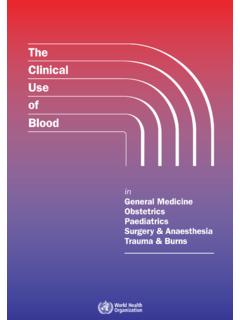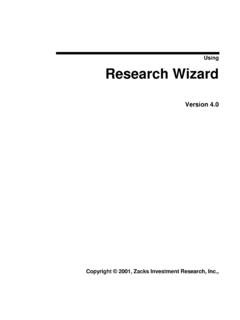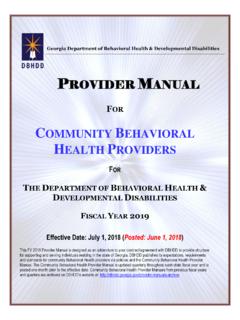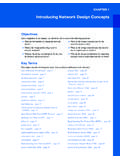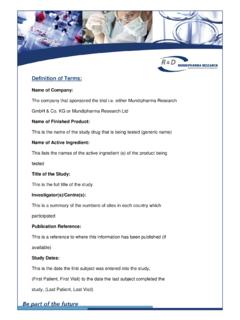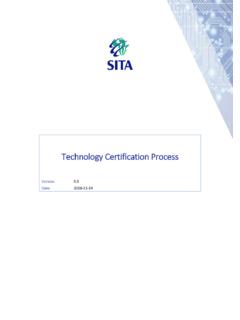Transcription of THE STRENGTHS AND WEAKNESSES OF TASK …
1 SRJIS/BIMONTHLY / TONIA GRACE GANTA (2760-2771) JAN-FEBRUARY , 2015, VOL-III/XVI Page 2760 THE STRENGTHS AND WEAKNESSES OF TASK BASED LEARNING (TBL) APPROACH. Tonia Grace Ganta, Research Scholar, Department of Education, Andhra University, Andhra Pradesh. Task based language learning approach aimed at developing the cognitive as well as the communicative skills of language learners and so the language teachers, researchers, textbook writers and course designers welcomed the approach as cognitive skills play a vital role in today s competitive environment. In order to cater to the demand of the day the text book publishers started labelling text books as task based. Syllabus designers started claiming that their syllabus is based on task based learning, though some of them are not aware of the difference between task-supported learning and task based learning.
2 The present paper seeks to study and present the STRENGTHS and WEAKNESSES of Task based learning approach. The factors that contributed to the task based revolution and the different types of tasks that are used in a language classroom are also discussed. Keywords: Task based learning (TBL) approach, communicative language teaching (CLT). 1. Introduction: The prominence of Task based learning in the present day context is evident from the numerous recent publications made in the field of task- based learning and teaching. Task based approach focuses on communication and conveying message. It gives secondary importance to the forms used (Ellis, 2009). A task is an activity which requires learners to use language, with emphasis on meaning, to attain an objective . (Bygate, Skehan & Swain, 2001, as cited in Ellis, (2009, pg 5).)
3 A task is said to be a classroom activity which is objective and interactive. Which aims at comprehension and production of target language as the learners perform some set of work plans (Lee, 2000, as cited by Ellis 2009). Tasks involve learners in comprehending, manipulating, producing or interpreting in the target Abstract SRJIS/BIMONTHLY / TONIA GRACE GANTA (2760-2771) JAN-FEBRUARY , 2015, VOL-III/XVI Page 2761 language (Nunan,1989 as cited in Ellis 2003 pg7).There is a cognitive as well as a linguistic dimension to a task. The actual objective of a task is not that the learners should arrive at a successful outcome but that they should use language in ways which improve language learning. Tasks are activities which aim at meaning-focused language use.
4 Therefore a task encourages the participants to function as language users rather than language learners using communicative processes as those incorporated in real world activities. Tasks involve cognitive processes such as selecting, reasoning, classifying, sequencing information, and transforming information from one form of representation to another (Ellis,2009 pg 7). Task based learning therefore aims at developing the cognitive as well as the communicative skills of language learners. 2. Factors that contributed to Task-based revolution: The primary factor that contributed to Task-based revolution is the identification of the fact that pair work and group work enable the learners to take part in intensive verbal interaction unlike a teacher fronted interaction. Secondly pair work and group work function as an alternative to individual work.
5 The learners get a chance to work in co operation and co ordination, and that will lift their spirit and push the learners forward. Thirdly the features of a target language are not assimilated in natural oral context. Based on the way tasks are incorporated two types language teaching have emerged. The first one is task-supported language teaching where tasks are incorporated into traditional language based approaches to teaching. It uses the weak version of CLT which uses tasks as a means of providing practice for language items like structures and grammatical features. It employs Present-practice-produce and it is in the production stage that tasks are used. Second language research shows that learners do not acquire language in this manner and this approach is criticized on many grounds. The second one is the task-based language teaching where the strong version of CLT is employed.
6 In this case tasks are considered as units of teaching and complete courses are designed around the tasks and they form the basis for an entire language curriculum. It gives importance to communication rather than for grammar and fluency rather than accuracy. A task is executed in three stages Pre task where unfamiliar vocabulary or structures are explained, during the task where some help is provided if necessary and post task where the language items are revised. SRJIS/BIMONTHLY / TONIA GRACE GANTA (2760-2771) JAN-FEBRUARY , 2015, VOL-III/XVI Page 2762 3. Different types of tasks: Focused tasks are designed in such a way that the learners grasp the targeted feature. They focus on form while implementing the task. Listening tasks can be devised this way where a specific feature of language is presented to the learners.
7 Listening tasks can also be considered as non-reciprocal tasks. Reciprocal tasks are the ones that require the learners to interact or in other words reciprocate. Focused tasks are designed in three major ways 1) Structure-based production tasks: Structure-based production tasks are designed to elicit a particular target language feature or structure. For instance in tasks like Picture difference, picture sequencing, picture drawing etc. Question forms are elicited. Tasks like exchanging travel itinerary, the simple present tense or future tense are elicited. 2) Comprehension tasks: comprehension tasks are based on the assumption that language acquisition takes place as a result of input-processing. The learners are required to pay conscious attention and notice the linguistic form that is presented as input and based on the responses made by the learner in the input phase a task is given.
8 3) Consciousness-raising tasks: Consciousness raising tasks are designed to cater to explicit learning. They are meant to develop awareness at the level of understanding and not merely noticing. The learners are required to talk about language, they are asked to frame their own grammar rules. Unfocused tasks are based on a theory which says that learning is an implicit process which cannot be influenced directly through instruction. According to the theory of implicit learning, practice must involve learners in authentic communicative activity and is based on the strong version of communicative language teaching (Howatt, 1984 as cited in Ellis 2009). Studies claim that structured tasks and tasks based on familiar information tend to produce higher accuracy and tasks which push learners to reach a justified conclusion tend to produce more advanced language.
9 Studies also show that if planning time is given to learners before actually taking part in the task, it leads to greater complexity and giving learners a post- task activity after an interactive task, like asking them to write about their own performance leads to greater accuracy (Skehan, 2002). The following quote from the Hong Kong Ministry of Education is typical of the kinds of governmental pronouncements being made with regard to task based instruction. The task based approach aims at providing opportunities for learners to experiment with and explore both spoken and written language through learning activities SRJIS/BIMONTHLY / TONIA GRACE GANTA (2760-2771) JAN-FEBRUARY , 2015, VOL-III/XVI Page 2763 that are designed to engage learners in the authentic practical and functional use of language for meaningful purposes.
10 Learners are encouraged to activate and use whatever language they already have in the process of completing a task. The use of tasks will also give a clear and purposeful context for the teaching and learning of grammar and other language features as well as All in all the role of task- based learning is to stimulate a natural desire in learners to improve their language competence by challenging them to complete meaningful tasks (CDC 1999:41 as cited in Nunan 2004 pg 13,14).Because of pronouncements like this task- based language learning has become popular. 4) STRENGTHS of TBL approach: Task based language learning offers a lot of advantages as it is communication based and allows the learners to transfer previously acquired knowledge to new communicative contexts (Nunan,1989).It encourages the learner to emerge as a language user.









